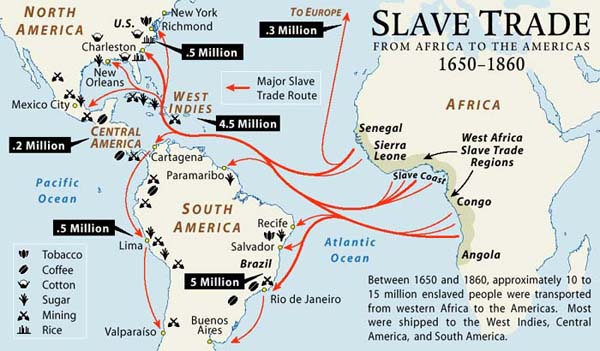Angela
Elite member
- Messages
- 21,823
- Reaction score
- 12,329
- Points
- 113
- Ethnic group
- Italian
See:
http://www.cell.com/ajhg/fulltext/S0002-9297(17)30394-4
"From the eighth century onward, the Indian Ocean was the scene of extensive trade of sub-Saharan African slaves via sea routes controlled by Muslim Arab and Swahili traders. Several populations in present-day Pakistan and India are thought to be the descendants of such slaves, yet their history of admixture and natural selection remains largely undefined. Here, we studied the genome-wide diversity of the African-descent Makranis, who reside on the Arabian Sea coast of Pakistan, as well that of four neighboring Pakistani populations, to investigate the genetic legacy, population dynamics, and tempo of the Indian Ocean slave trade. We show that the Makranis are the result of an admixture event between local Baluch tribes and Bantu-speaking populations from eastern or southeastern Africa; we dated this event to ∼300 years ago during the Omani Empire domination. Levels of parental relatedness, measured through runs of homozygosity, were found to be similar across Pakistani populations, suggesting that the Makranis rapidly adopted the traditional practice of endogamous marriages. Finally, we searched for signatures of post-admixture selection at traits evolving under positive selection, including skin color, lactase persistence, and resistance to malaria. We demonstrate that the African-specific Duffy-null blood group—believed to confer resistance against Plasmodium vivax infection—was recently introduced to Pakistan through the slave trade and evolved adaptively in this P. vivaxmalaria-endemic region. Our study reconstructs the genetic and adaptive history of a neglected episode of the African Diaspora and illustrates the impact of recent admixture on the diffusion of adaptive traits across human populations."
http://www.cell.com/ajhg/fulltext/S0002-9297(17)30394-4
"From the eighth century onward, the Indian Ocean was the scene of extensive trade of sub-Saharan African slaves via sea routes controlled by Muslim Arab and Swahili traders. Several populations in present-day Pakistan and India are thought to be the descendants of such slaves, yet their history of admixture and natural selection remains largely undefined. Here, we studied the genome-wide diversity of the African-descent Makranis, who reside on the Arabian Sea coast of Pakistan, as well that of four neighboring Pakistani populations, to investigate the genetic legacy, population dynamics, and tempo of the Indian Ocean slave trade. We show that the Makranis are the result of an admixture event between local Baluch tribes and Bantu-speaking populations from eastern or southeastern Africa; we dated this event to ∼300 years ago during the Omani Empire domination. Levels of parental relatedness, measured through runs of homozygosity, were found to be similar across Pakistani populations, suggesting that the Makranis rapidly adopted the traditional practice of endogamous marriages. Finally, we searched for signatures of post-admixture selection at traits evolving under positive selection, including skin color, lactase persistence, and resistance to malaria. We demonstrate that the African-specific Duffy-null blood group—believed to confer resistance against Plasmodium vivax infection—was recently introduced to Pakistan through the slave trade and evolved adaptively in this P. vivaxmalaria-endemic region. Our study reconstructs the genetic and adaptive history of a neglected episode of the African Diaspora and illustrates the impact of recent admixture on the diffusion of adaptive traits across human populations."





